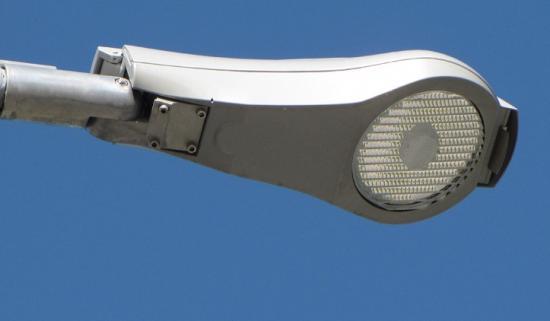Highland Council secures largest ever Salix loan in Scotland to fund energy improvements
27th May 2019

The Highland Council has secured a £3.5m interest-free loan from Salix Finance to invest in energy efficiency measures across the Council estate. The loan, which is the largest Salix has awarded in Scotland, match-funds the Council's self-financing investments in energy efficiency to create a £7 million Energy Efficiency Fund.
The fund is ring-fenced for investment in projects that will reduce the Council's energy spend and carbon emissions. This will include switching internal and external building lights to efficient LED lighting, installing Solar Photovoltaics, and upgrading inefficient oil boiler systems.
Salix Finance is an independent organisation that provides interest-free loans for investment in improving energy efficiency. Salix is funded by the Scottish Government, the Welsh Government and the Department of Business, Energy and Industrial Strategy and provides finance to public sector bodies to reduce their carbon emissions and energy spend.
Work is being undertaken by Council officers to refine the projects and determine the best sites to maximise financial and carbon savings. Thanks to these upgrades, the Council forecasts a potential saving of over £600,000 per annum on energy bills and annual carbon savings of over 1,600 tonnes of carbon dioxide equivalent.
Lighting and heating upgrades are also anticipated to make considerable improvements to the working and learning environments for both staff and school pupils.
Councillor Margaret Davidson, Leader of the Council, said: "We are delighted to have secured this loan from Salix Finance. Investing in energy efficiency measures across our Council estate is vital to both our financial and environmental sustainability."
She added: "The Council recognises that it has a vital leadership role in terms of reducing the region's climate change impact to support both national and global emissions reduction targets. This funding from Salix, alongside work which has already been programmed, will allow us to go further and faster in terms of mitigating our impact."
Councillor Gordon Adam, Chair of the Commercial Board, said: "Advice from Procurement Scotland has indicated that electricity prices are going to rise significantly by 2020/21. The Council must reduce our consumption of energy to protect us from future increases to our energy bills and reduce this budget pressure, therefore helping us protect our frontline services.
"Securing this interest-free loan enables us to significantly increase the amount of energy efficiency work we can undertake. It is a really exciting opportunity and an important component of our Energy Strategy, alongside reducing energy use through behaviour change and increasing the Council's renewable energy generation."
The Council will operate the loan as a ‘Recycling Fund', whereby savings made from these projects will be ‘recycled' back into the Energy Efficiency Fund for investment in additional energy efficiency measures. The Council can continue to ‘recycle' this funding, without interest, for as long as it has projects that meet Salix criteria to reduce carbon emissions and energy spend.
To date, Salix has worked with the public sector in Scotland to invest over £51 million in energy efficiency projects, saving an estimated £146 million over the lifetime of the projects.
A Highland council paper on lighting in February 2018 said, "The LED replacement programme has seen the number of lights converted across the Highlands rise from 7,000 units in 2015/2016 to 12,500 in 2016/2017 with a projected figure for the end of 2017/2018 of 19,000 which represents 35% of our lighting stock. The programme has reduced our electricity consumption by 25% saving 3.5 million kWh per year and is helping offset energy price increases.
---------------------------------------------------------------------------
1 March 2018 - Highland council
Highland Council to generate income through solar energy
The Highland Council is to progress with plans to generate over £4 million profit and significantly reduce its carbon emissions by installing solar panels on its estate.
The Council’s Corporate Resources Committee yesterday (28 February 2018) approved a self-financing project using £2.3 million of capital to install 2.5 megawatts of solar panels on sites across the Council estate. The portfolio is estimated to generate net profit of £4.01 million over the course of 20 years. This is after repayments for the £2.3 million investment have been made, and accounting for maintenance, insurance, fees and charges.
Solar Photovoltaics, or Solar PV for short, is a technology that converts daylight into electrical power. Energy generated will be ‘sold’ to power Council buildings in close proximity.
Net profit can be achieved each year for the anticipated 20-year lifespan of the panels. It will also reduce the organisation’s annual carbon footprint by an estimated 1,000 tonnes per year.
It is hoped that this will be the first of multiple projects to generate income by from renewable energy on the Council estate. Solar has been selected for the first project as it is most efficient for the desired time scales, relatively straightforward to deploy, reliable, and market proven.
Chair of the Corporate Resources Committee, Cllr Alister MacKinnon said: "The Administration is committed to looking at new ways to generate income, make savings and for the Council to become more commercial so I am glad the Committee has given the go-ahead so work can progress."
The Council’s Commercial & Continual Improvement Team have been working closely with the Redesign Board to identify opportunities for how the Council could both generate income and reduce expenditure through energy related opportunities
Chair of the Redesign Board, Cllr Bill Lobban added: "This is a fantastic project which will bring substantial income to the Council. Staff and Members of the Redesign Board have done a huge amount of work in bringing these plans to fruition and I look forward to yet more innovative projects coming forward."
The next stage of the project will see the Commercial & Continual Improvement Team work with the Energy and Sustainability Team, Councillors and building users to confirm the optimal locations for the panel sites and coordinate implementation.
Why energy prices may keep rising
Related Businesses
Related Articles
Council welcomes Visitor Levy flexibility plan
The Highland Council welcomes moves by the Scottish Government to introduce greater flexibility on how it could design a Visitor Levy Scheme for consultation. The Visitor Levy (Scotland) Act 2024 currently provides local authorities with discretionary powers to implement percentage-based levies following statutory consultation.Highland Council is reaching out for views to shape its next 26/27 budget.
As it looks to set out its forthcoming priorities, the council is seeking involvement from members of the public, including businesses, community groups, parents, and young people. All their opinions are going to be crucial in deciding how Highland Council will take on its budget challenge for 2026-2027.Have your say in Thurso's future £100million investment by attending public consultation events
Thurso is to benefit from £100m investment in education and community facilities and are rolling out the first phase of public consultations on 9 and 10 December 2025. The Highland Council is inviting people that live, work, or study in Thurso, to come along to the public consultation events to have their say; this is an opportunity to help shape the future of Thurso, to gather views and ideas.Finding new owners for empty homes - Scheme launched to help return more empty homes to active use
A new online portal has been launched to bring empty homeowners together with prospective buyers or developers with the aim of facilitating more properties to be used as homes again. Covering the whole of Scotland, this builds on the success of local pilots, referred to as "matchmaker schemes".Consideration for short term let control area in Skye and Raasay
Steps towards introducing a short term let control area have been considered by Highland Council's Isle of Skye and Raasay area committee. On Monday (1 December 2025) the committee heard evidence to justify the grounds for the introduction of a Short Term Let Control Area covering all or part of Skye and Raasay.Workforce North event spotlights Highland economy
EMPLOYERS and educators from across the Highlands have gathered to hear how a new initiative is aiming to transform the region's economy. Workforce North - A Call to Action brought together business leaders and teachers from primary and secondary schools from across the Highland Council area with a wide range of partners geared towards education, learning and skills development at Strathpeffer Pavillion.
Council calls for meaningful engagement from Home Office Over 300 Asylum Seekers Being Sent to Inverness
The Highland Council continues to call for meaningful engagement from the Home Office over its plans to temporarily accommodate up to 300 adult male asylum seekers at Cameron Barracks, Inverness. It follows an email on Monday from Alex Norris MP, Minister for Border Security and Asylum, to Council Leader, Raymond Bremner, which failed to answer questions raised by the Council or address community concerns.SSEN Transmission becomes first signatory to Highland Social Value Charter
SSEN Transmission has become the first company to sign up to the Highland Social Value Charter (HSVC), marking a significant milestone in delivering long-term socio-economic benefits for communities across the Highlands. Investment commitments from the company include funding for roads, new homes, jobs, and work for local contractors in addition to a local and regional fund for communities to apply to.Wick - Aberdeen PSO - Update issued 24/11/2025
The Highland Council continues to work through the procurement process for the provision of the Wick Public Service Obligation for the Highland Council. We have now entered the preferred bidder stage and have entered a standstill period.Highland Council winter road condition and school closure report for 25 November 2025
Maps of the Council's gritting routes by priority and policy are available online at www.highland.gov.uk/gritting (external link) The information provided is a summary of reports from operational staff and is intended to give a general indication of typical conditions in each area at a point in time. It is not intended to imply that any individual route is entirely snow and ice free and drivers must be aware that conditions can change rapidly and make their own assessment of conditions for travelling.
